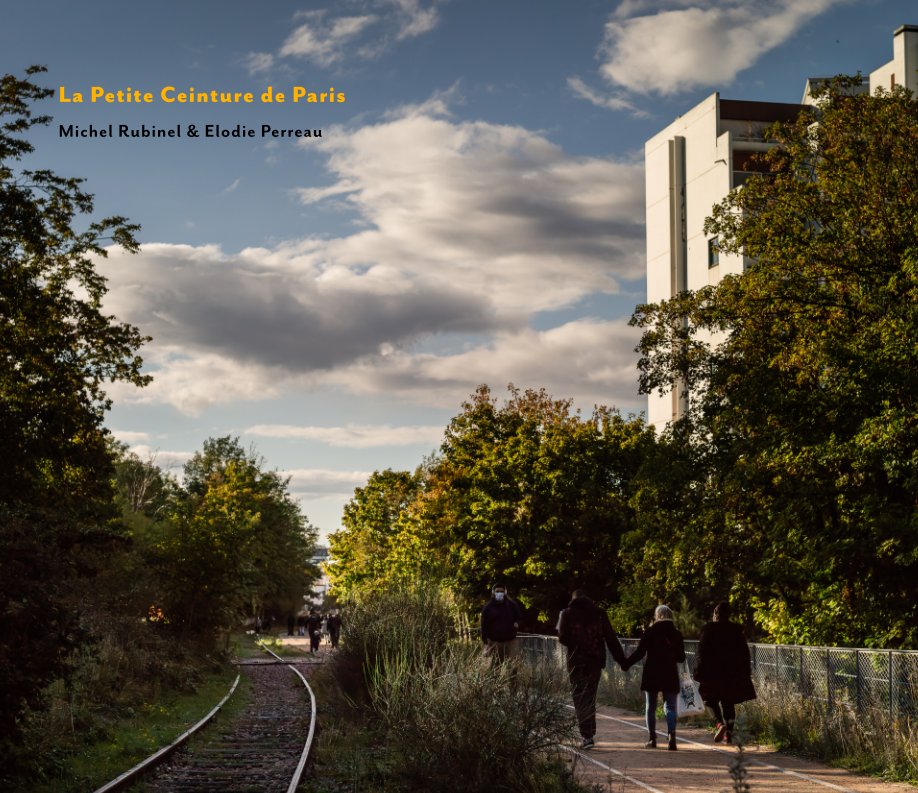La Petite Ceinture de Paris
de Michel Rubinel Elodie Perreau
Este es el precio que tus clientes ven. Editar lista de precios
Acerca del libro
The Petite Ceinture de Paris line, commonly referred to as the "Petite Ceinture", is a 32-kilometre-long double-track railway line encircling Paris within the boulevards des Maréchaux. Although still part of the national rail network, most of the line is now unused.
Opened in sections between 1852 and 1869, the Petite Ceinture initially enabled freight trains to bypass Paris: its junctions with all the main lines avoided a journey to the terminus stations. From 1862, it absorbed the Auteuil line in its western section and opened up to passengers. For a moderate fare, it offered workers a circular service through the outlying districts of the capital, where Haussmann's renovation of Paris had relegated them. After traffic peaked at 38 million passengers at the 1900 Universal Exhibition, Parisians increasingly abandoned the Petite Ceinture. They were put off by the lack of frequency, the spacing between stations, their outdated equipment and the fact that they were sometimes difficult to access. It was also facing competition from the metro and bus, new means of transport better suited to urban needs. It definitively closed to passengers on July 23rd, 1934 and it was immediately taken over by a bus service of the same name, the "PC". Only a few long-distance trains continued to run at night. Paris passengers continued to use part of the Auteuil line, which was integrated into RER line C in 1988 to form the new Ermont - Eaubonne to Champ-de-Mars line. Freight traffic continued until the 1990s. Today, the infrastructure is overgrown with vegetation, giving the line a special atmosphere and enabling the development of a biodiversity that is unique in Paris. Although access to the Petite Ceinture is still theoretically forbidden, it is particularly popular with lovers of urban exploration. It also hosts a number of cultural events. The question of whether it should be reopened or converted into a greenway is a regular topic of political debate in Paris.
Opened in sections between 1852 and 1869, the Petite Ceinture initially enabled freight trains to bypass Paris: its junctions with all the main lines avoided a journey to the terminus stations. From 1862, it absorbed the Auteuil line in its western section and opened up to passengers. For a moderate fare, it offered workers a circular service through the outlying districts of the capital, where Haussmann's renovation of Paris had relegated them. After traffic peaked at 38 million passengers at the 1900 Universal Exhibition, Parisians increasingly abandoned the Petite Ceinture. They were put off by the lack of frequency, the spacing between stations, their outdated equipment and the fact that they were sometimes difficult to access. It was also facing competition from the metro and bus, new means of transport better suited to urban needs. It definitively closed to passengers on July 23rd, 1934 and it was immediately taken over by a bus service of the same name, the "PC". Only a few long-distance trains continued to run at night. Paris passengers continued to use part of the Auteuil line, which was integrated into RER line C in 1988 to form the new Ermont - Eaubonne to Champ-de-Mars line. Freight traffic continued until the 1990s. Today, the infrastructure is overgrown with vegetation, giving the line a special atmosphere and enabling the development of a biodiversity that is unique in Paris. Although access to the Petite Ceinture is still theoretically forbidden, it is particularly popular with lovers of urban exploration. It also hosts a number of cultural events. The question of whether it should be reopened or converted into a greenway is a regular topic of political debate in Paris.
Sitio web del autor
Características y detalles
- Categoría principal: Arquitectura
- Categorías adicionales París
-
Características: Apaisado grande, 33×28 cm
N.º de páginas: 198 - Fecha de publicación: ene. 27, 2024
- Idioma English
- Palabras clave Architecture, Cityscapes, City, Paris, France
Ver más


